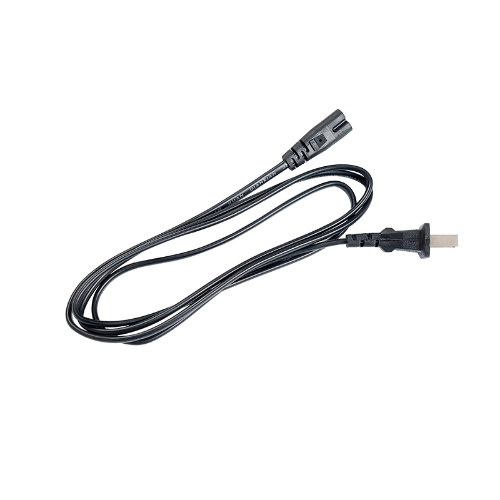Electrical cords can be classified based on various factors, including their construction, intended use, and specific features. Here are some common classifications for electrical cords:
Construction:
Non-Shielded Cords: These cords consist of conductive wires covered with insulation material, providing basic protection and electrical conductivity.
Shielded Cords: Shielded cords have an additional layer of shielding, typically made of metal foil or braided wire, surrounding the conductive wires. The shielding helps to minimize electromagnetic interference (EMI) and radio frequency interference (RFI).
Wire Gauge:
Electrical cords are available in different wire gauges, which indicate the thickness of the wires. Common wire gauge sizes for electrical cords include 16 AWG (American Wire Gauge), 14 AWG, and 12 AWG. Thicker wires generally have lower resistance and can carry higher currents.
Voltage Rating:
Electrical cords are manufactured with specific voltage ratings to indicate the maximum voltage they can safely handle. Common voltage ratings include 120V, 240V, and 600V. It's crucial to select an electrical cord with a voltage rating suitable for the intended application.
Plug Type:
Electrical cords come with various plug types, which determine the connection interface between the cord and the power source. Examples include Type A (two-prong, non-grounded), Type B (three-prong, grounded), Type C (European two-pin), and Type G (British three-pin). The plug type should match the power outlet and equipment requirements.
Cord Length:
Electrical cords are available in different lengths to accommodate various needs. Standard cord lengths for household use range from a few feet to several yards. Industrial or specialized cords may be available in longer lengths to meet specific requirements.
Specialized Features:
Some electrical cords have additional features to cater to specific applications. These features can include built-in surge protection, weather resistance for outdoor use, flame retardant properties, oil resistance for industrial environments, or high-temperature insulation.
Besides,The production of electrical cords typically involves several steps, including wire preparation, insulation, stranding, jacketing, and quality testing. Here is a general outline of the production steps for electrical cords:
Wire Preparation:
Copper or aluminum wire is typically used for electrical cords. The wire is first cleaned and inspected for any defects or impurities. It may also undergo a process called annealing, which involves heating and cooling to enhance its flexibility and conductivity.
Insulation:
The wire is then coated with insulation material to provide electrical insulation and protection. Common insulation materials include PVC (polyvinyl chloride), rubber, or thermoplastic compounds. The wire is passed through an extruder, where the insulation material is applied in a controlled manner, forming a continuous layer around the wire.
Stranding:
In many cases, electrical cords consist of multiple strands of wire twisted together. This stranding process enhances the flexibility of the cord and allows it to withstand bending and movement. The insulated wire strands are twisted together using specialized machinery, forming a stranded core.
Jacketing:
After stranding, the cord may receive an outer jacket for additional protection and durability. The jacket material is typically a sturdy, abrasion-resistant material such as PVC or rubber. Similar to the insulation process, the jacketing material is extruded onto the stranded core, forming a protective layer around the cord.
Marking and Printing:
Electrical cords often undergo marking and printing processes to indicate important information such as the manufacturer's name, cord specifications, safety certifications, and voltage ratings. This information is typically printed onto the jacket using specialized printing equipment.
Quality Testing:
Throughout the production process, electrical cords undergo various quality control tests to ensure they meet safety and performance standards. These tests may include checks for insulation integrity, voltage withstand capability, flexibility, and resistance to environmental factors such as heat, cold, or moisture.
Packaging:
Once the cords have passed quality testing, they are coiled, cut to desired lengths, and packaged for distribution. Packaging can vary depending on the intended market, including spools, reels, coils, or individual packaging.





 English
English русский
русский















